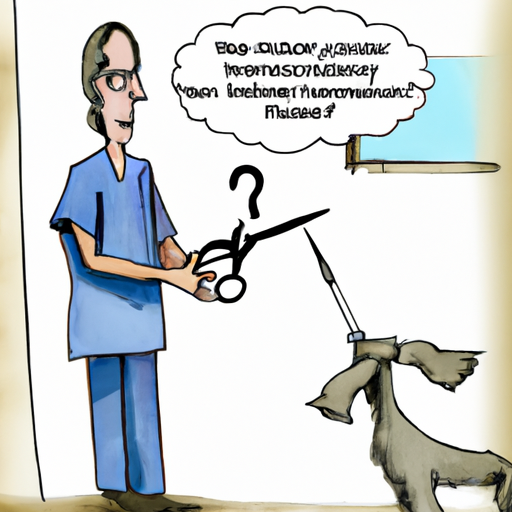As an ardent dog lover, you’ve likely heard of the practice of ear cropping, a surgical procedure often referred to as “clipping.” This might have led you to the question, “Where can I get my dog’s ears clipped?” Before diving into the locations and options available, it’s crucial to understand the ins and outs of this procedure, its ethical considerations, and what it means for your four-legged friend.
Table of Contents
- Understanding Ear Clipping
- Ethical Considerations
- Where to Get Your Dog’s Ears Clipped
- The Procedure: What to Expect
- Aftercare and Recovery
- Frequently Asked Questions
Key Takeaways
- Ear cropping is a controversial procedure with varying legal restrictions worldwide.
- The procedure should always be performed by a licensed veterinarian.
- Aftercare is crucial for a quick recovery and to prevent infection.
Understanding Ear Clipping
Ear cropping, or clipping, is a surgical procedure performed on dogs, commonly associated with specific breeds like Dobermans, Boxers, and Great Danes. It involves removing a portion of the dog’s ears, followed by shaping and taping them to stay upright. This procedure, performed under anesthesia, is typically done when the puppy is between 6 to 12 weeks old.
Ethical Considerations
Ear cropping is a subject of ongoing debate, with animal welfare organizations like the American Veterinary Medical Association opposing the procedure due to its cosmetic nature. They argue that it can cause unnecessary pain and stress to the animal. In many countries, including parts of Europe and Australia, the practice is banned.
Nevertheless, some proponents argue that it’s part of breed standards or can prevent ear infections. As it stands, the procedure is legal in the United States, but it’s crucial to make an informed decision considering your pet’s well-being.
Where to Get Your Dog’s Ears Clipped
If you opt for this procedure, it’s essential to find a reputable, experienced, and licensed veterinarian to perform the operation. You can find qualified vets through referrals, online research, or consult resources like the American Animal Hospital Association (AAHA). They provide a comprehensive list of accredited animal hospitals across North America.
For more insights on the process, you can visit OneTopDog. They have resources on various dog-related topics, such as understanding your pet’s health, grooming tips, and breed-specific information, which can provide additional context.
The Procedure: What to Expect
Here’s a step-by-step breakdown of the ear cropping procedure:
- The dog is put under general anesthesia.
- The ears are marked and measured for the desired shape.
- A portion of the ear is surgically removed.
- The remaining parts are stitched, and the ears are taped into the desired position.
- The dog is monitored until it recovers from anesthesia.
Aftercare and Recovery
Aftercare is crucial to ensure the dog’s ears heal properly and prevent infection. This includes regular check-ups, cleaning the wound, ensuring the dog doesn’t scratch or shake its head excessively, and retaping the ears as instructed by the vet. The healing process can take several weeks, during which you should monitor your dog closely.
Frequently Asked Questions
- Is ear cropping painful for dogs?
Yes, ear cropping is a surgical procedure that can cause pain, especially during the recovery process. Pain management is crucial and should be discussed with your vet.
- Are there any risks associated with ear clipping?
Risks include potential for infection, adverse reaction to anesthesia, and the possibility of the ears not standing up as desired.
- Can ear cropping be reversed?
No, ear cropping is permanent. It’s essential to consider this before deciding on the procedure.
- At what age should the procedure be done?
Typically, ear cropping is done when puppies are between 6 to 12 weeks old.
In conclusion, while you can find numerous places to get your dog’s ears clipped in the United States, the decision should be made with careful consideration of the ethical implications, potential risks, and your pet’s overall well-being. Always consult with a trusted vet and prioritize your dog’s health and comfort above aesthetic preferences.



